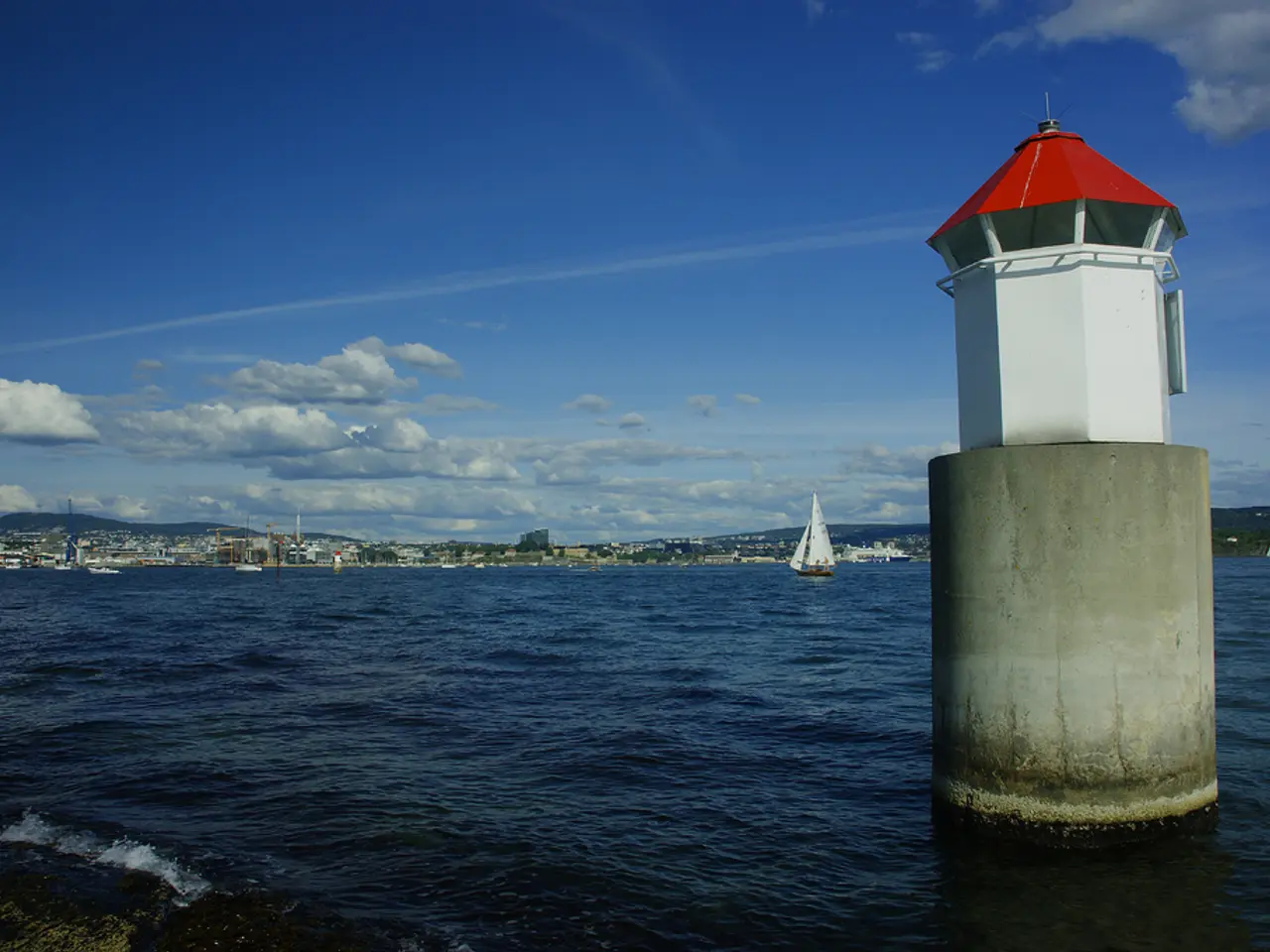Coastal Town of Kamakura and Its Surrounding Waters
===================================================================================================
Nestled along the coast of Shōnan, Kamakura, Japan, is a city steeped in history and tradition. Known as one of Japan's three major former capitals, Kamakura boasts a harmonious blend of historic shrines and temples with a picturesque seaside location. This unique cultural fusion is evident in the city's various aspects, including the Misogi ritual, the Tsurugaoka Hachimangū Reitaisai festival, surfing culture, and the Kamakura fireworks display.
Misogi Ritual
The Misogi ritual, a traditional Shinto purifying practice involving bathing in natural water such as the sea, holds a significant place in Kamakura's spiritual and coastal culture. The ritual, with its roots traced back to Minamoto no Yoritomo, the city's founder, is still carried out today. During the Tsurugaoka Hachimangū Reitaisai festival, shrine priests bathe in the sea at Yuigahama beach at dawn on the first day, reinforcing the enduring connection between purification, religion, and the sea in Kamakura.
Tsurugaoka Hachimangū Reitaisai Festival
The Tsurugaoka Hachimangū Reitaisai is a major religious festival honouring the local Hachiman deity, a god of warriors and the samurai class. The festival, which takes place from September 14 to 16 each year, features ritual purification ceremonies, processions, and Shinto rites that reinforce Kamakura's spiritual heritage, particularly its connection to the warrior legacy of Minamoto no Yoritomo.
Surfing Culture
Kamakura's coastal location and beaches like Yuigahama and Shichirigahama have historically supported fishing lifestyles but have also become popular spots for surfing. Modern surfing at Kamakura beaches coexists alongside the spiritual tradition of Misogi, as both involve intimate engagement with the sea. The lively seaside culture complements the longstanding religious and historic identity of the area.
Kamakura Fireworks Display
The Kamakura fireworks display is a seasonal event often held to celebrate summer and community while attracting locals and tourists alike. While not directly tied to the Misogi ritual or Tsurugaoka Hachimangū festival, the fireworks contribute to the festive atmosphere of Kamakura's coastal summer culture, blending traditional festivities with contemporary enjoyment.
Additional Attractions
The Shōnan coast, including Kamakura, is a popular spot for yachting, surfing, and other marine sports. During winter, Mount Fuji can be seen beyond Enoshima from the Shōnan coast. Wakaenoshima, the oldest surviving artificial harbour in Japan, constructed in 1232 during the Kamakura period, still stands, though only rounded stones remain today.
In conclusion, Kamakura's unique cultural blend of spiritual purification, historic samurai legacy, and coastal leisure makes it a captivating destination for visitors. The city's rich history, combined with its modern surfing culture and festive fireworks displays, offers a distinctive experience that appeals to both history enthusiasts and modern leisure seekers.
A snapshot of a home-and-garden photo capturing the picturesque Wakaenoshima, the oldest artificial harbor in Japan, could serve as a reminder of Kamakura's historical identity. A sports enthusiast might find an outdoor-living opportunity in the vibrant Surfing Culture that coexists with the Misogi ritual and traditional festivals of Kamakura. For those who prioritize travel and luxury, the Shōnan coast, with its offerings of yachting and car enthusiasts, promises an immersive lifestyle experience by the sea.





